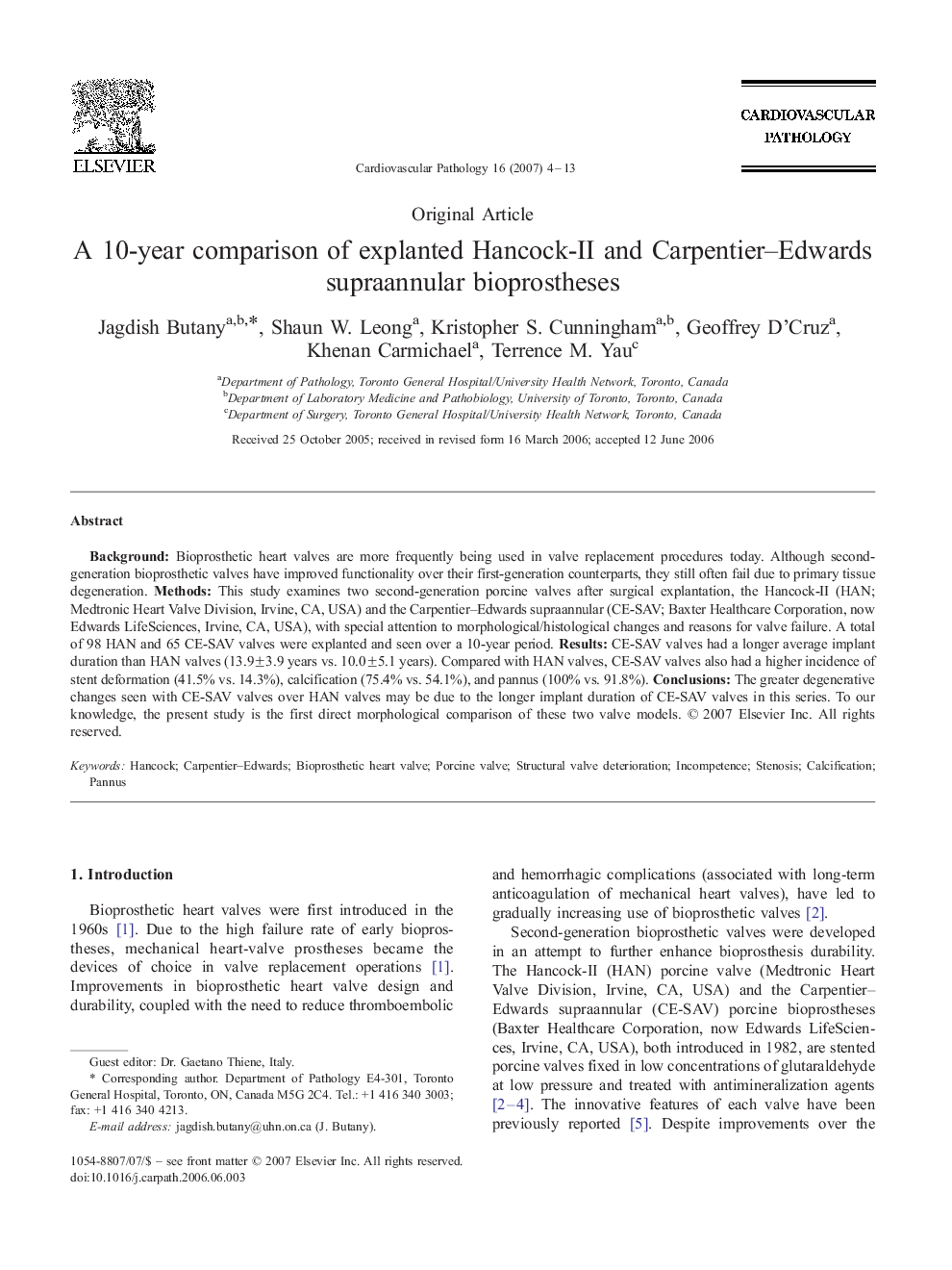| Article ID | Journal | Published Year | Pages | File Type |
|---|---|---|---|---|
| 2899521 | Cardiovascular Pathology | 2007 | 10 Pages |
BackgroundBioprosthetic heart valves are more frequently being used in valve replacement procedures today. Although second-generation bioprosthetic valves have improved functionality over their first-generation counterparts, they still often fail due to primary tissue degeneration.MethodsThis study examines two second-generation porcine valves after surgical explantation, the Hancock-II (HAN; Medtronic Heart Valve Division, Irvine, CA, USA) and the Carpentier–Edwards supraannular (CE-SAV; Baxter Healthcare Corporation, now Edwards LifeSciences, Irvine, CA, USA), with special attention to morphological/histological changes and reasons for valve failure. A total of 98 HAN and 65 CE-SAV valves were explanted and seen over a 10-year period.ResultsCE-SAV valves had a longer average implant duration than HAN valves (13.9±3.9 years vs. 10.0±5.1 years). Compared with HAN valves, CE-SAV valves also had a higher incidence of stent deformation (41.5% vs. 14.3%), calcification (75.4% vs. 54.1%), and pannus (100% vs. 91.8%).ConclusionsThe greater degenerative changes seen with CE-SAV valves over HAN valves may be due to the longer implant duration of CE-SAV valves in this series. To our knowledge, the present study is the first direct morphological comparison of these two valve models.
